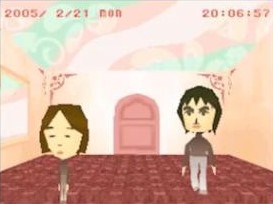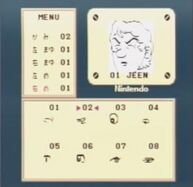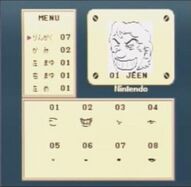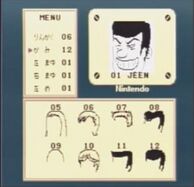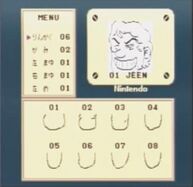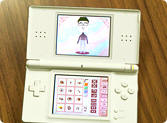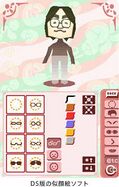Mii (lost early concept builds of customized avatar by Nintendo; 1980s-2000s)
Mii is the name of the customizable avatar created by Nintendo. Mii was first introduced with the Mii Channel pre-installed on the Wii released in 2006. Since then, Mii has been supported on DS, 3DS, WiiU, and now Switch. The creator of Mii and its concept was Shigeru Miyamoto, who developed a game using the idea but kept cancelling it until Mii Channel came to fruition, and it dates back to the height of Famicom's heyday.
History
Miyamoto thought it would be interesting to customize avatars using Famicom's exclusive Disk System peripheral and insert another "scenario disk" to play. A prototype was developed, but upper management did not understand how this could be turned into a game, and the game was shelved[1]. The idea was revealed in Miyamoto's presentation at the 2007 Game Developers Conference.
The screen of the prototype released to the public is not as simple as the current Mii but has a look reminiscent of a comic strip character. Note further that the eyebrows and eyes are customized separately on the left and right.
On February 23, 2000, Mario Artist: Talent Studio was released as a game for the Nintendo 64DD, which featured the ability to create your own character called "Talent". However, due to the failure of the 64DD itself, not many people enjoyed the game[2]. Miyamoto still could not give up on the idea and developed Stage Debut, an avatar customization game for GameCube, which Miyamoto thought no one could resist, but even so, the reaction and understanding within the company was not good, and the release did not come true again.
Around the time of the Wii development, unbeknownst to Miyamoto, Software Planning & Development (SPD) happened to be developing a similar avatar customization game for Nintendo DS that Miyamoto had envisioned. It was based on the concept of fukuwarai, a traditional Japanese game, and SPD's production group 1 manager, Yoshio Sakamoto, presented this game to Satoru Iwata. Iwata, who had been told repeatedly by Miyamoto that he wanted to create an avatar customization game, thought that this was exactly what Miyamoto was talking about and immediately went to show it to Miyamoto as well[3].
Miyamoto was also amazed by this game and started working on this project. However, the team struggled to come up with a use for the characters. They could create a mini-game collection, but they knew that eventually players would stop playing and the characters would become unused and unloved. With the Wii still in development, the Wii Sports development team struggled to come up with an aesthetic. They tried to make the player character a Mario character, but that was not appropriate because they wanted to make the player feel like a realistic, professional athlete. Therefore, it was decided to change the avatar of the customized game that had been developed for the DS to one that would work on the Wii so that it could be used in Wii Sports, and furthermore, to open that avatar not only to Wii Sports but to the entire Wii system[1]. Thus, the Mii Channel was born.
In addition, the game originally developed for the DS was called Otona no Onna Uranai Techō (大人のオンナ占い手帳, lit."Adult Woman Fortune Telling Notebook"), and was intended for adult women. However, since the DS was already popular among adult women, the project changed direction to make the game available to everyone[4]. That game was released on June 18, 2009, as Tomodachi Collection.
Availability
As of 2023, both Disk System and DS prototype builds have not surfaced online.
Gallery
Videos
See Also
- Battle Mii (lost Wii U tech demo; 2011)
- Chase Mii (lost Wii U tech demo; 2011)
- Mario Demo (lost Virtual Boy tech demo; 1994)
- Mario's Face (lost Nintendo DS tech demo; 2004)
- New Super Mario Bros. Mii (lost Wii U tech demo; 2011)
- Super Mario 128 (lost build of cancelled GameCube/Wii game; 2000-2006)
References
- ↑ 1.0 1.1 Feature: From Famicom Disk System To Switch - The Evolution Of Nintendo's Miis - NintendoLife Retrieved May 2, 2023
- ↑ 社長が訊くゲームセミナー2009 Retrieved May 2, 2023
- ↑ 開発スタッフが語る『似顔絵チャンネル』の話 Retrieved May 2, 2023
- ↑ 社長が訊くゲームセミナー2009 Retrieved May 2, 2023
